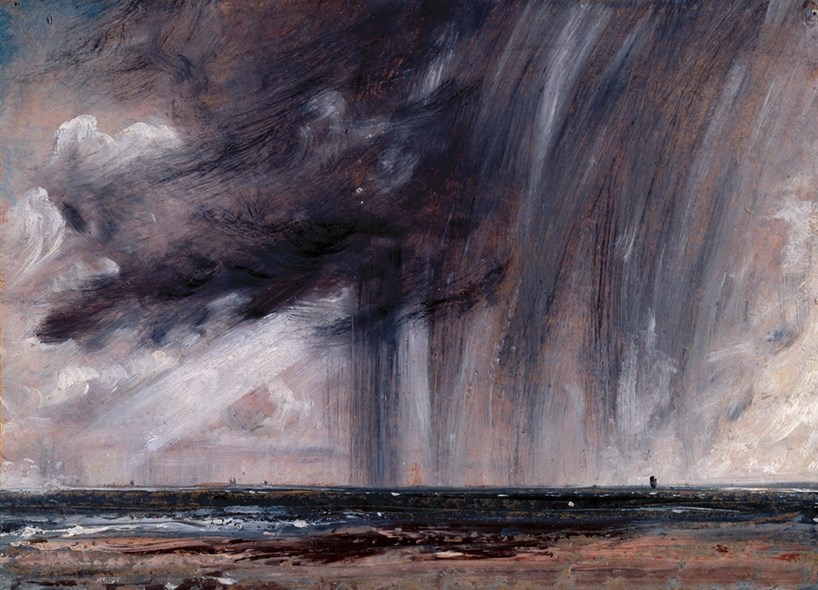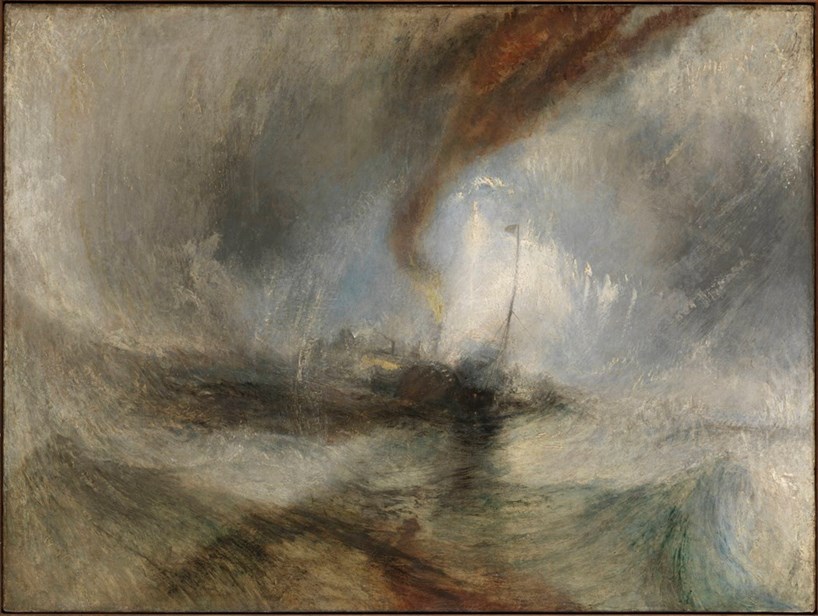THE Hampshire Cultural Trust was established in 2014 and supports 23 venues around the county. Proximity to the populations of Southampton and Portsmouth makes The Arc, in Winchester, the perfect choice for this small-scale exhibition of John Constable (1776-1837), much as his own associations lay further inland, in another cathedral city, at Salisbury.
Constable is very much a man about place and landscape: East Bergholt, Dedham, Hampstead, and Brighton frame his work, and friendships in the Close repeatedly brought him back to Salisbury. But, when he and his friend John Fisher visited Winchester for the night of 12 November 1821, he confided to his wife that “It is the most magnificent cathedral I ever saw, much more impressive but not so beautifull as Salisbury — and all about the town is much more for a painter than here.”
Only a couple of sketches survive from that two-day trip (V&A, not shown). Tellingly, at their return to Salisbury the next day, Constable went to look at the Earl of Radnor’s collection of landscape painting by Claude Lorrain at Longford Castle near by.
Where he is known to us for his wide scenic views, this show concentrates on the inner landscape of the mind, making much of his statement, “I live by shadows, to me shadows are realities,” and reminding us that for Constable “painting is but another word for feeling.”
 © Royal Academy of Arts, London. Photo John HammondRainstorms over the Sea (c.1824-28) by John Constable, in the Winchester exhibition
© Royal Academy of Arts, London. Photo John HammondRainstorms over the Sea (c.1824-28) by John Constable, in the Winchester exhibition
Constable was deeply insecure and, at times, pessimistic: “Yet dark ages may return, and there are always dark minds in enlightened ones,” he wrote. He was a conservative who could not always hope for beneficence in the changes of the Industrial Revolution and from social progress; the approach of the Reform Act in 1832, “this tremendous attack on the constitution of the country”, filled him with dread.
After a biblical seven years trying to win the hand of Maria Bicknell, granddaughter of the local Rector, Dr Durand Rhudde, who objected to the marriage, Constable made a happy marriage, but her illnesses and early death in 1828 robbed him of purpose. As a single parent, he was racked with concern for his surviving children. For this exhibition, Nicola Moorby has brought together images that show Constable working with dark and light (chiaroscuro) in his landscapes to reflect these inner anxieties.
Pencil drawings of his family home at East Bergholt (dated 2 and 3 October 1814) sketch it by moonlight and in daylight to make good this point, drawn at a time when he was happy, entertaining a childhood friend, Captain James Gubbins, at home. An oil sketch painted exactly 200 years ago shows two travellers walking due east across Hampstead Heath towards the distant welcome of the Spaniards Inn, while a thunderous sky looms above.
An oil sketch of Bowleaze Cove at Weymouth shows beleaguered figures on the shore where Captain John Wordsworth, cousin of Constable’s hostess, had died in the wreck of the East-Indiaman Abergavenny in 1805. “That sea in anger and that dismal shoar”, as his namesake had it in his 1807 “Elegiac Stanzas”.
 TateJ. M. W. Turner, Snow Storm — Steam-Boat off a Harbour’s Mouth (exhibited 1842)
TateJ. M. W. Turner, Snow Storm — Steam-Boat off a Harbour’s Mouth (exhibited 1842)
Two days before I travelled to Winchester, I had been invited in to see the new installation of the Tate collections on Millbank. Constable is still in exile in a last room (38) in the Clore Gallery. It is reached by the intrepid after wading through more than one hundred of J. M. W. Turner’s pictures, and necessarily is diminished by the seven rooms that come before it.
Although the new hang has opened up some views through the galleries (especially the enfilade running the length of Atterbury Street), and features some 200 works acquired since 2000, seventy in the past five years, there is a feel of desperation in much of it. Storerooms and stockrooms have been raided; the display notices should tell us when these daubs were last publicly displayed.
Room 12A is intended to “highlight key figures in British art”. Here we are introduced to Annie Swynnerton’s “trail-blazing work as a painter”. John Singer Sargent thought highly of her, and in 1922, at the age of 78, she became the first woman to be admitted to the Royal Academy in 154 years as an Associate. Nothing in the portraits of Count Zubov (1908-9) or those of Miss Elizabeth Williamson, either in a nursery portrait or on a pony, gives much confidence.
For me, the most successful parts of the display were the attention focused on the dialogue of Henry Moore and Francis Bacon (Room 23) and in the happy links made of exiles and dynasties (1545-1640) in Room 1, while there are some individual works worth searching out. Among them are Glyn Philpot’s 1922 Repose on the Flight into Egypt, acquired in 2004; Mark Gertler’s seductive (The Artist’s Brother Harry holding an apple (1913); and the clever hang of John James Baker’s indifferent The Whig Junto (1710) on Nils Norman’s 2022 wallpaper “Sparkles of Glory”.
“Constable: The Dark Side” is at The Arc, Winchester, until 16 August. Phone 01962 398046. www.arcwinchester.org.uk
Tate Britain, Millbank, London SW1. Phone 020 7887 8888. www.tate.org.uk